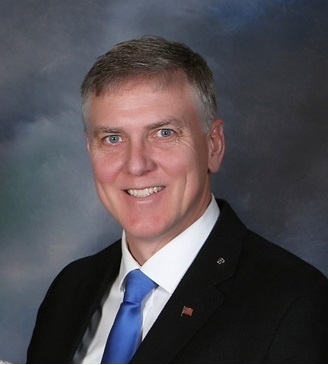He had good reason to choose his words carefully. To speak in a global context concerning the interconnections of population, consumption and inequality (as he did) is no easy task. The status quo for nearly 50 years has been that the Global North tells the Global South, “You have too many mouths to feed — you should curb your population growth rates,” and the Global South tells the Global North, “You eat too much — you should curb your consumption rates.” Both sides are correct, but still manage to speak past each other.
Critics love to pour derision on poor old Thomas Malthus, the population economist whose ideas have undeniably been abused by those pushing racist, xenophobic and anti-urban growth agendas. Similarly vilified is Paul R. Ehrlich’s flawed yet visionary book, “The Population Bomb,” the reading of which introduced me to human population growth issues when I was still in high school.
Yet for all their flaws, the analyses of Malthus and Ehrlich cannot be ignored. Feeding more mouths over time does result in still more mouths to feed. Satisfying more consumer demands results in still more consumer demands to satisfy.
To say this out loud is to toss a sacred cow on the third rail. In many political contexts, mention of population control is about as popular as gun control at a National Rifle Association convention.
One of the most successful ways to shut down legitimate discourse on population issues is to lump that discussion with historical eugenics, racism, colonialism and genocide. Discussion quickly descends into a paranoia-fest of “whose population? And who is doing the controlling?” — not improper concerns, but too often improperly used to shut down all discussion.
One result of this deadlock is that the human population has jumped 267% in the roughly six decades I have been alive.
I have seen the changes personally. In the 1970s as a teenager in Ohio, I watched the corn fields down the road get turned under, subdivided and planted with houses. I moved to Southern California in 1980 and soon thereafter lived and worked in the Riverside County agricultural hinterlands of the western Coachella Valley, places like Cherry Valley and Beaumont, now filled cheek-by-jowl with houses.
Exurbia has become suburbia.
I lived in the San Jacinto Mountains in the 1980s and in the southern Sierra Nevada from 2005 to 2020 and have seen those forests made ghosts of their former selves by bark beetles and big burns. The whole landscape, even after regrowth, looks tired and worn down at the heel.
California’s urban cores have not grown that much in population over the last 50 years. Instead, more people have built and moved into the wildland-urban interface.
I was one of them and part of the problem.
Our home burned down in the Creek Fire of 2020. Nothing sensitizes you to the end of the world like having your own world end.
No matter who is winning the debate about growth, we clearly aren’t planning for that growth particularly well.
Experiments like China’s coercive and now-defunct One Child Policy notwithstanding, the only persistent governor on the engine of population growth has been the “invisible hand” of demographic transition: the historic shift from high-birth rates and high-infant death rates (in low-tech, low-female-education, low-economic-development societies) to low-birth rates and low-infant-death rates (in high-tech, high-female-education, high-economic-development societies). Because women with more options generally have fewer children, education and economic opportunities for women are key to both demographic transition and any possibility for reining in population growth.
Yet even this mild constraint is unacceptable for the likes of Ohio Senate candidate J.D. Vance, who has argued for parents having a more powerful say in American democracy than nonparents. Natalist nationalists like Vance want to roll back the achievements of cosmopolitanism and feminism, view migration as surrender and fear an extremely unlikely “abrupt population collapse” driven somehow by the aforementioned demographic transition.
According to the U.N. report’s forecast, the curve for absolute global population will continue to rise through most of the century before flattening and stabilizing (fingers crossed) at 10 billion or 11 billion.
Vance and his fellow travelers, however, seem little interested in the global situation. They castigate the decision to refrain from having children as “selfish” and lacking “physical commitment to the future.” Yet, beyond the immediate realm of the nuclear family or the demands of church and state for more parishioners and citizens, choosing to be childless is clearly unselfish — even reciprocally altruistic and committed to the future — in the context of the community of all life on this planet.
Choice, not coercion, is key.
The involuntary abortions forced on Chinese women under the One Child Policy are the flip side of American women being forced to carry pregnancies to term against their will in the wake of the Supreme Court Dobbs decision. Is it any wonder that the number of people seeking tubal ligations and vasectomies is way up? More of us seem to be concluding that, because we are pro-creation, we will choose not to engage in procreation.
It’s not impossible for human beings to say, “Enough of us, already!”
Originally trained as a biologist, Howard V. Hendrix taught literature and writing at Fresno State University for many years. He is the author of six novels.














